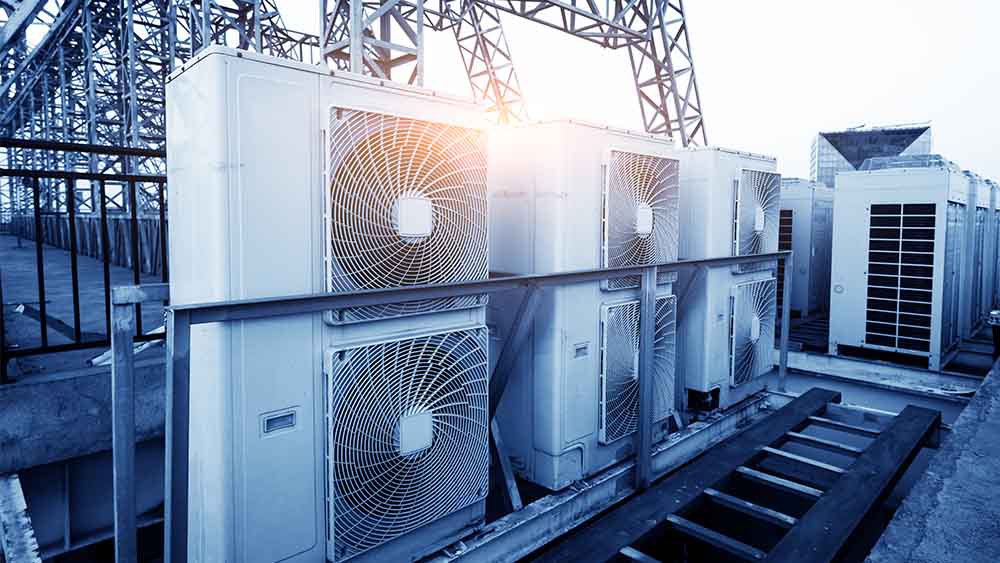
Air conditioning has become an essential part of our lives, especially during the hot summer months. With global warming on the rise, the demand for air conditioning is expected to increase even further. However, the traditional methods of air conditioning have their drawbacks, such as high energy consumption, environmental impact, and maintenance costs. As a result, researchers and innovators have been working on developing new and innovative technologies to address these challenges. In this article, we will discuss some of the trends and innovations in air conditioning that we can expect to see in the future.
- Smart Air Conditioning Systems
One of the most significant trends in air conditioning is the rise of smart systems that use advanced algorithms to optimize energy consumption. Smart systems can analyze the temperature and humidity levels in a room and adjust the settings accordingly. They can also be programmed to turn on or off at specific times, which can help reduce energy consumption and save money. Additionally, many smart systems can be controlled remotely, which adds convenience and flexibility.
2. Solar-Powered Air Conditioning
As the world becomes more environmentally conscious, many people are turning to solar-powered air conditioning systems. These systems use solar panels to convert sunlight into energy, which is then used to power the air conditioning unit. Solar-powered air conditioning is not only environmentally friendly, but it can also help reduce energy costs. However, it’s worth noting that solar-powered air conditioning systems can be expensive to install initially.
3. Ice-Powered Air Conditioning
Another innovative trend in air conditioning is the use of ice to cool a room. Ice-powered air conditioning systems work by freezing water at night when electricity is cheaper and using the ice to cool the room during the day. This can help reduce energy consumption and lower electricity bills. Ice-powered air conditioning is also environmentally friendly because it reduces the need for fossil fuels to generate electricity.
4. Evaporative Cooling
Evaporative cooling is a process that uses water to cool the air. It works by drawing hot air through a wet pad, which causes the water to evaporate and cool the air. Evaporative cooling is energy-efficient and environmentally friendly because it uses less energy than traditional air conditioning systems. However, it’s important to note that evaporative cooling is only effective in dry climates.
5. Magnetic Cooling
Magnetic cooling is an innovative technology that uses magnets to cool a room. It works by applying a magnetic field to a material, causing it to heat up. The material is then removed from the magnetic field, which causes it to cool down. Magnetic cooling is still in the experimental phase, but it has the potential to be a game-changer in the air conditioning industry because it’s environmentally friendly and energy-efficient.
6. Personalized Air Conditioning
Personalized air conditioning is a trend that’s gaining popularity in the industry. Personalized air conditioning systems use sensors to detect the temperature and humidity levels around a person and adjust the air conditioning settings accordingly. This means that each person in a room can have their own personalized air conditioning settings, which can help reduce energy consumption and improve comfort.
7. Biophilic Design
Biophilic design is an innovative trend in air conditioning that’s focused on creating a connection between people and nature. Biophilic air conditioning systems use plants and natural materials to create a natural environment inside a room. The plants help purify the air, and the natural materials help regulate the temperature and humidity levels. Biophilic air conditioning systems can also help reduce stress and improve productivity.
8. Self-Cleaning Air Conditioning
Self-cleaning air conditioning systems are a new trend in air conditioning that uses nanotechnology to clean the air conditioning unit. Nanotechnology is used to coat the air conditioning unit with a thin film that repels dirt and dust. This means that the air conditioning unit requires less maintenance and cleaning, which can help reduce maintenance costs and increase the lifespan of the unit. Additionally, self-cleaning air conditioning systems can improve indoor air quality, which is important for people with allergies or respiratory issues.
Conclusion
The future of air conditioning is exciting, with many innovative technologies and trends emerging. As people become more environmentally conscious and energy costs continue to rise, it’s essential to adopt new technologies and practices that are energy-efficient and environmentally friendly. Smart air conditioning systems, solar-powered air conditioning, ice-powered air conditioning, evaporative cooling, magnetic cooling, personalized air conditioning, biophilic design, and self-cleaning air conditioning are just a few of the innovative trends that we can expect to see in the future. By embracing these technologies, we can create a more sustainable and comfortable future.


